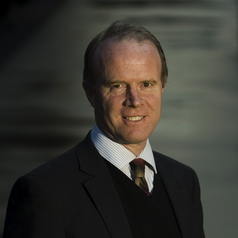
[Sheree Bekker] Injury Prevention has had an exciting start to 2018 with Professor Roderick McClure beginning his tenure as Editor-In-Chief. If you have not yet done so, be sure to read his first editorial: Injury Prevention: Where to from here?
To kick off this blog for 2018, I asked Rod a few questions about his vision for the journal, an our field at large.
Professor Roderick McClure MBBS (Syd); BA (Syd); PHD (ANU) is registered in Australia as a Medical Practitioner and Specialist in Public Health Medicine, and is a Fellow of the Australia Institute of Company Directors. He currently holds the position of Dean, Faculty of Medicine and Health, University of New England, NSW, Australia. He also holds the concurrent role of Visiting Scientist, Harvard School of Public Health, Harvard, MA, USA.
[SB] In your introductory editorial, Injury Prevention: where to from here, you write: “Injury Prevention is the voice of a constituency”. Tell us more about your vision or intention around this.
[RM] I sometimes wonder if there is such a thing as “injury prevention”. And if there is, how many injury prevention practitioners would identify with the term. Does your architect, or your road engineer, or your publican, – or your police commissioner, school principal, council worker or sports administrator, realise they are injury prevention practitioners? I have certainly spoken to road safety consultants, suicide prevention workers, and emergency department clinicians who do not consider themselves to be. Injury prevention (or the lack of it) is so much part of every social institution, and every aspect of societal function, than it remains fragmented and largely invisible. There is however a group of people who hold the concept of injury prevention for the world. Members of this group are found in every country, in all walks of life. They see a pattern behind injury case examples, they see commonalities among injuries of different types, or that occurs in different settings. Members of this group identify universal opportunities for prevention that can be implemented at the individual and population levels to make huge differences in the public’s health. Injury Prevention is the journal is for these people. The journal helps create a collective identity. It provides is a living repository of the group’s collective body of knowledge. It provides a virtual meeting place for the group to share their ideas and brainstorm directions for the future. And it provides a single point of high ground from which the group project their vision, and invite the world to join the collective effort to reduce the global burden of injury.
[SB] We hear there is a planned revival of The BMJ Injury Prevention podcast series? How can the Injury Prevention community engage with this?
[RM] The BMJ Injury Prevention Podcasts are intended to personalise the injury prevention message. The simple goal of this series will be to engage the broadest possible community in the injury prevention effort. By establishing a regular monthly feature we will develop a regular following. By making our podcasts topics interesting and our conversation lively, we will grow our audience. And by listening to audience feedback we will fine tune our content and adapt to listener interest. Above all we will invite listeners themselves to join the podcasts conversations. Podcasts will not simply be about researchers talking to the public. Podcasts will be another, highly accessible way, the whole Injury Prevention community can engage in an ongoing development of the field.
[SB] You also write that “The Journal is a communication platform, not a product”. This is an innovative take on academic publishing. What does this mean more broadly for Injury Prevention as a community, and a conversation?
[RM] Academic journals are cooperatives. Stakeholders identify a need, researchers and practitioners undertake work to address the need, create and test solutions, and submit information about their work to journals. Journal editors curate the information they receive and enable the dissemination of authors’ work to a global audience.
I see journals to be not products in themselves, but platforms for posting curated information about scientific work.
Thinking of journals this way emphasises the necessarily two way nature of communication. Journals are a shared space where people meet to exchange ideas. Editors are responsible to readers, and should learn about reader’s needs and interests, just as much as authors need to be responsible to the demands of quality science.
The February 2018 Volume 24, Issue 1 of Injury Prevention is available online now.
You can also follow us on Facebook and Twitter.
We hope that you will all join us in this conversation in 2018 and beyond!